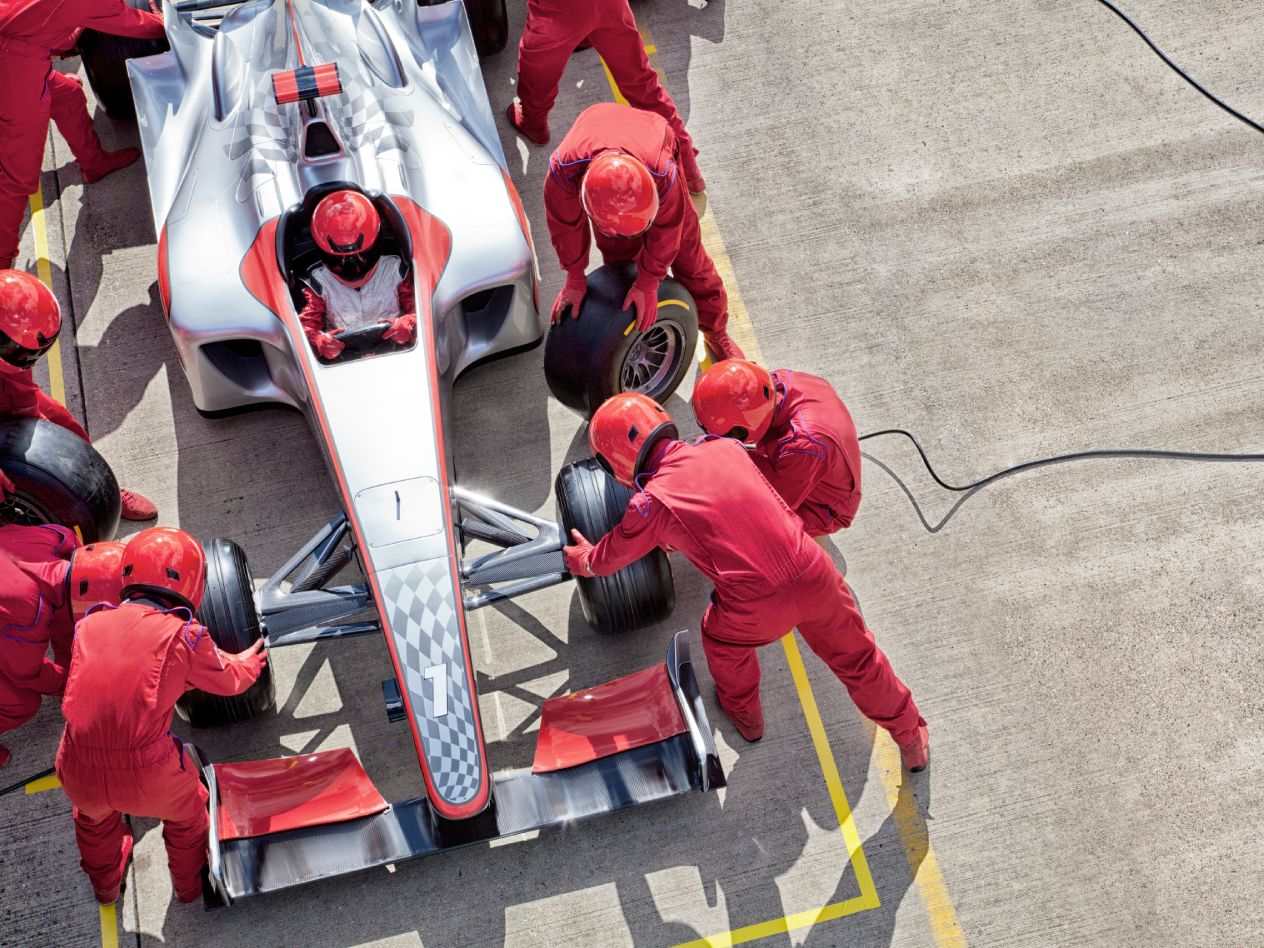Creating and leading high-performance teams: 4 ways an MBA program prepares you for the challenges and opportunities
- January 3, 2024
- By WashU Olin Business School
- 5 minute read

Every team is unique, a mash-up of the strengths, interests and values of the individuals that comprise it.
As such, every team requires a unique kind of leadership, one that evolves over time and in direct relation to the members of that team.
But high-performing teams bring an extra special challenge for leaders. A high-performance business culture can be full of pressures and stresses, and with high performance comes high expectations, high stakes and potentially very low lows.
The challenges of leading a high-performance team today
The challenges of high-performing teams have become more acute as the modern workplace has changed. Leaders are navigating to hybrid and remote working styles, which not only require a lot of work and adjustment, but also make creating and maintaining a formidable team culture more difficult. This shift necessitates a strong approach toward remote work leadership to ensure that the team culture remains intact and even thrives despite the physical distance.
Norms are often fostered and transmitted through regular contact. Individuals sharing a familiar environment where they enact rituals helps build a workplace culture between them. Leaders must actively participate in culture-creating when something disrupts that contact, finding new ways to communicate values and encouraging standard practices.
High-performing individuals present other challenges, too. They often bring an elevated level of skill in a niche area but sometimes need more interpersonal experience to effectively coordinate their skills within a cohort. A team in which self-driven individuals work in silos is not going to operate at its highest performance potential.
However, though many challenges are involved in remote work leadership in a high-performance business culture, effective business leaders can find unique opportunities today. The digital realm allows teams to meet despite distance, for example, to broaden their diversity and use tools like generative AI to quicken tasks and make room for innovation.
How can leaders make a high-performance business culture work for them?
When learning how to motivate employees as a manager of a high-performance team, people often forget that they are high-performing individuals themselves. They can call on their own experiences to guide them as they guide others.
One of the markers of high-performing individuals is a desire for praise, such as a desire to please and succeed. And while these individuals are often self-motivated and self-sufficient at work, they are sensitive to their environments. They are more likely to disengage if they do not feel seen and appreciated. For many high-performing people, the benefits of employee recognition are more powerful motivators than financial incentives. That’s why Olin teaches MBA students to become effective business leaders by modeling the value of gratitude.
By expressing gratitude regularly, leaders can cultivate a culture of gratitude within the team that spills over to expressions of appreciation between members, stakeholders and customers, fostering a more engaging and healthy work climate. Understanding the benefits of employee recognition can help leaders create an environment where individuals feel valued, which, in turn, encourages them to contribute their best toward achieving the team’s objectives. While business performance is often attributed to revenue and other financial indicators, team satisfaction and fulfillment have tangible impacts on performance. According to research from the University of Warwick, “happier subjects are more productive,” and not just a little—12% more productive to be (almost) exact.
So, if interpersonal phenomena—such as culture, gratitude and happiness—are the foundational elements of high-performance teams, how can leaders learn how to access and improve these dynamics within their current and future workplaces?
How the Olin MBA equips leaders to motivate high-performing teams
Pursuing an MBA degree can equip leaders with the necessary skills and knowledge of interpersonal dynamics to better lead high-performance teams. Here’s how it works in Olin’s program:
Learn from a vast body of research
The strategies of effective business leadership can seem intangible and unlearnable, but Olin recognizes that students need to be able to pin down their thinking with research. Team experiences—whether through education, sports or business—give leaders their knowledge of team dynamics, but most of these insights are untested. The MBA and leadership program instructs students on practices that have been rigorously tested and substantiated, exposing students to the latest research and most up-to-date best practices.
Practice interpersonal dynamics
In addition to learning about leadership through research, MBA students have many chances to practice leadership in real teams. Using interactive case studies and experiential learning projects, MBA students experience various challenging and dynamic leadership scenarios that require them to test and apply the skills they study in the classroom. Executive coaching and reflective practices further push students to craft their own unique leadership styles while they identify their strengths and areas for growth as leaders.
Learn from people who have done it at the highest level
Olin has a class called “Defining Moments: Lessons in Leadership and Character From the Top.” Taught by Professor Bill Bottom, this class exposes students to the lessons of high-performance teams and notable leaders. The course doesn’t just cover practical issues; it talks about the notions of character and integrity essential to a leader’s resilience. Students study successful leaders’ career-defining moments, the key points where choices determined the trajectories of their companies.
Understand how different teams behave
One can never hope to learn the dynamics of every possible team iteration. As described above, every unit is a unique blend of the people who comprise it. However, students will develop a greater awareness of possible teams during their time in the MBA program. For example, our class “Foundations of Diversity, Equity and Inclusion,” taught by Professor Gisele Marcus, helps students learn to navigate the differences they may discover in the teams they lead. Not only that, but to guide them with empathy, gratitude and an eye for motivating the best possible performances.
The link between an MBA and leadership constantly develops as the world changes and the challenges it presents evolve. But one thing will always be true: leading high-performing teams requires a combination of learning, intuition and practice. By following this code, Olin aims to give students the experience they need to lead incredible groups of people.
Media inquiries
For assistance with media inquiries and to find faculty experts, please contact Washington University Marketing & Communications.
Monday–Friday, 8:30 to 5 p.m.
Sara Savat
Senior News Director, Business and Social Sciences
